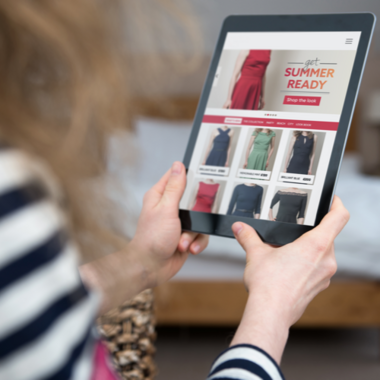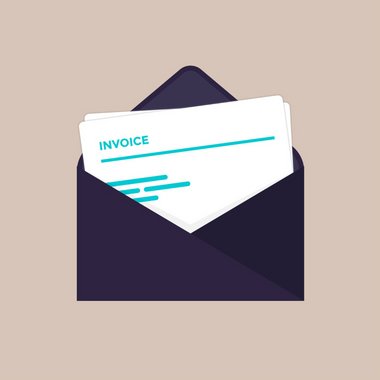
- Six minutes read
2020 trends: The future of pay later in the DACH region
As part of our payment trends in 2020 series, in this article we take a look at the change landscape of deferred payments in the DACH region.
Here are five key trends we expect to see for payments by invoice and instalment in Germany, Austria, and Switzerland in the next 12 months.
Cultural comfort with instalment payments
Historically, consumers in the DACH region have been more averse to some forms of credit. For example, German consumers are much less likely to use credit cards than other forms of payment both offline and online. According to our 2018 research into consumer payment preferences only 36% of Germans habitually use a credit card to make payments in-store, compared to almost half of Americans and British consumers (49% US; 48% UK), and 70% of Canadian consumers.
However, despite this reluctance to rely on credit for spending, there is a shifting attitude when it comes to paying in instalments. To at least some degree DACH region consumers are still wary of entering into sustained credit arrangements by creating longer-term instalment plans, but a short-period agreement is now seen by consumers as less of a credit agreement, and more as a simple mechanism to offer financial flexibility without having to commit to the long-term burden of credit cards or loans.
Once statistic that demonstrates this growing level of comfort with extending the deferred payment period to 3-6 months is the increase in the number of consumers that elect to extend an invoice with a 30-day payment period and convert it into an instalment plan. According to our data, the volume of consumers in the DACH region who are taking this option has grown by over 100% in the past two years.
Overdue upgrades of the in-store experience
Much of the time the shopping experience is more efficient, and therefore enjoyable, online. Nowhere is this more true than the checkout; online checkouts not only strive to take as much friction as possible out of the payment process, they also offer more payment methods.
So there is pressure on high street retailers to implement the same upgrades in-store. One response has been the introduction and growth of Amazon Go-style checkout-free shopping; when asked last year for our Lost in Transaction: The future of payments for SMBs research report, 72% of in-store small and medium-sized businesses told us that they are looking for efficiencies in the way that they complete transactions, and 62% believe that frictionless transactions will speed up payments, resulting in more satisfied customers.
This trend of stripping friction from the checkout process will extend to facilitating pay later solutions in 2020. That is because currently, too often setting up a pay later instalment plan in-store is an incredibly labour-intensive process; credit checks often require the time-consuming process of filling out paper forms and then waiting up to thirty minutes for the checks to be completed. Addressing this poor user experience must be a priority for retailers in 2020.
Buyers will be able to upload their own personal data via their smartphone, rather than sharing this sensitive information with shop staff. This not only avoids potential privacy concerns, or the anxiety some shoppers may have about making conducting a credit check in public, it also benefits the retailer that now doesn’t have to consume its resources on this process. Digital credit checks will also eliminate excessive paperwork that can often take hours, rather than minutes to process.
A shift to white-labelling
Reducing shopping cart abandonment, as well as empowering consumers with greater flexibility to financially plan, is one of the most significant benefits of enabling pay later solutions for eCommerce merchants. But this is often easier said than done; a trend for digital commerce in 2020 will centre on making this more efficient. Specifically, the most significant change we expect to see in the next 12 months is the shift preference for white-label pay later solutions.
White-label payment solutions enable the merchant to maintain full control over the appearance and user journey at the checkout and beyond, throughout the invoice or instalment experience. More businesses will convert to white-label solutions in 2020 in order to offer a best-in-class solution but also protect the brand that their consumers expect to interact with, in order to avoid the change of brand at the checkout causing abandoned transactions.
White-labelling can also transcend to the dunning process, where eCommerce businesses contact their customers to manage collections on outstanding accounts, and notify them when a due payment hasn’t been completed. Through white-labelling this key communication process merchants also have the ability to personalise the messaging for each customer, and in doing so enhance the brand connection and user experience.
A rejection of one-size-fits-all solutions
And as well as preserving brand presence throughout the checkout, a priority for merchants in 2020 will be to move away from one-size-fits-all pay later solutions, and instead adopt more tailored solutions.
No two businesses are the same, yet many pay later solutions offer a single product to all merchants. Alternatively, a fully customisable pay later solution enables merchants to tailor the payment option to suit their business and their customers.
The level of control merchants have over their pay later solutions differs considerably, but here are some of the customisations we think will become more important to merchants in the next 12 months:
1. Payment due on delivery
With many pay later solution providers the repayment period automatically begins once an order is placed; however, customising so that the repayment period only begins once the goods are shipped is becoming more important to merchants as there may be a substantial and unpredictable length of time between the order being placed and the product being delivered. For businesses supplying custom goods this makes a significant difference to overall customer satisfaction.
2. Buying down consumer pricing
Often the cost of making payments on instalment for the consumer are fixed; it is set by the payment services provider, so the merchant has no influence over this. Increasingly merchants are demanding the ability to elect to absorb a portion of costs normally passed onto the consumer by payment services providers as a business strategy, thus reducing the payment rate for their customers.
3. Temporary absorption of penalty fees
During periods such as the holiday season, merchants are now demanding to give consumers an extended payment period. The reason for this is that not only does this gives customers some leeway with their payments during a stressful time of year but also avoids customer complaints about being charged for late fees if their order is incorrectly fulfilled, which is more likely at this busy time of year.
Integrating pay later solutions with cash
Payment by instalment and payment by invoice will grow as alternative payment methods in the DACH in their own right in 2020. But additionally, one further trend we predict we will see come to the fore is an integration of pay later solutions with other alternative payment methods, and most notably for the DACH reason integrating invoices with cash. This is because cash is so central to consumer spending in Germany, Austria, and Switzerland.
According to S&P Global, in 2017 almost half (47.5%) of all transactions in Germany including online payments were still conducted in cash. According to Deutsche Bank 74% of retail transactions are still made using cash in Germany.
And consumers in Germany and Austria carry more cash on them than consumers in virtually every other country in Europe. According to Deutsche Bank the average German carries €107 in cash; separate reports have stated that the average German carries €103 and the average Austrian carries €89.
So it is understandable that enabling consumer who prefer to use cash to pay invoices this way is a strategy for growing the pay later market that we will see more merchants adopt in 2020. This can be implemented in a number of ways, including placing a QR code within a paper invoice that can be scanned by a smartphone and linked to an eCash solution such as Paysafecash.




